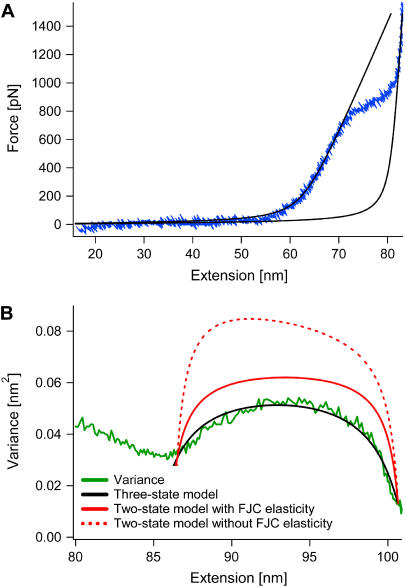FIGURE 3.
Two-state versus three-state model. (A) The force-extension curve (blue) from one molecule is fit in the low-force (chair) and high-force (boat) regime simultaneously with the modified FJC. In the fit (black), the Kuhn segment lengths of the chair and the boat, lk,chair and lk,boat, were fixed to 4.412 and 5.696 Å, as given by ab initio calculations (25). The number of rings, N = 142, and the segment elasticities, Se, chair = 11, 519 pN nm−1 and Se, boat = 90, 230 pN nm−1 (all values rounded to closest integer), are the results of the fit. (B) The magnitude of the predicted variance from the two-state model (red) clearly disagrees with the experimental variance (green) (fixing N = 142 from the FJC fit). A simple three-state model (black), however, results in good agreement with the experimental variance (again fixing N = 142). The results of the fit are Δlbi = 0.488 ± 0.005 Å, Δlbc = 0.994 ± 0.004 Å, and B = 0.617 ± 0.010.

